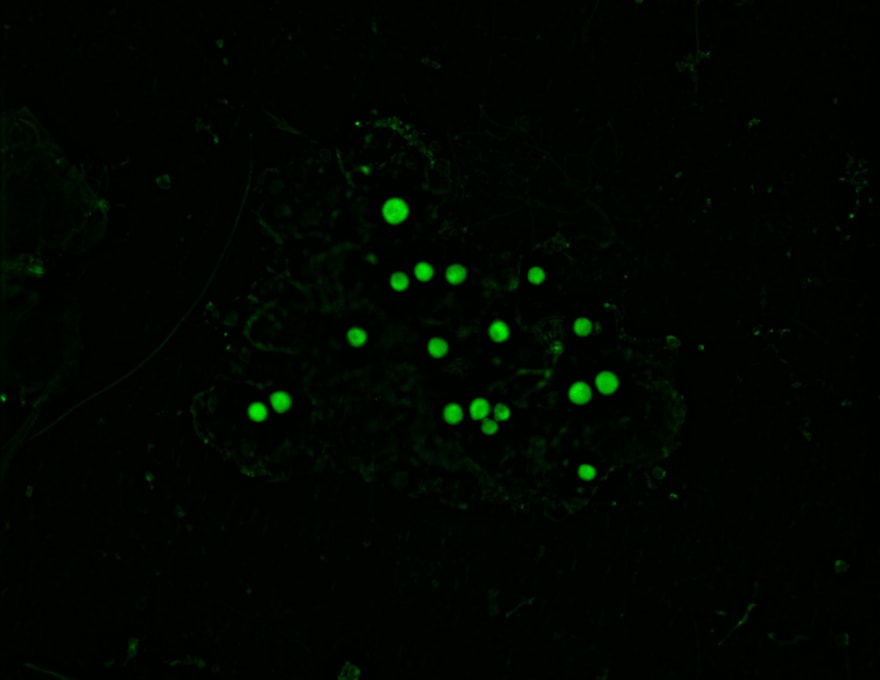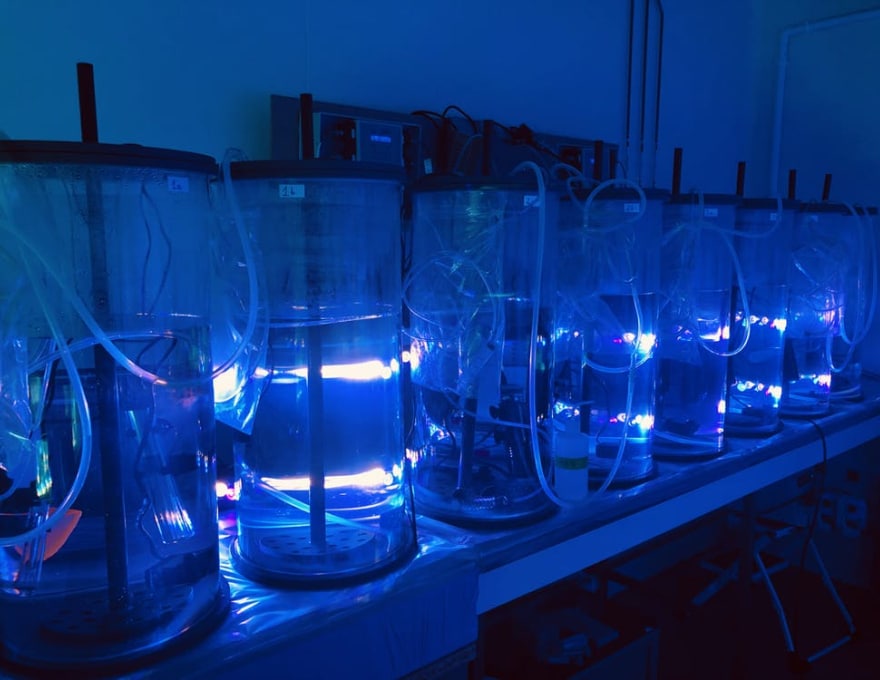The “NOTION” project: predict the marine microorganisms’ response to future climate change scenarios
Led by Mar Benavides, microbial oceanographer and researcher at the Mediterranean Institute of Oceanography (MIO/IRD, South of France), the “NOTION” project aims at studying the impact of climate change on phytoplankton’s diversity, therefore understanding their role in climate regulation, biological activity of the oceans and in providing resources for humanity (e.g. fishing industry).
Supported by the BNP Paribas Foundation through its Climate & Biodiversity Initiative, “NOTION” addresses the Sustainable Development Goals (SDG) 14 “Life below Water” and 13 “Climate Action” in particular.
Discover the replay of the conference: "These tiny oceanic creatures that could save our oceans"
Mar Benavides recently introduced her project through one of our Climate & Biodiversity Initiative conference. Have a look at its summary in the following sketch note format, and relive the conference by watching the replay on our YouTube channel (French audio, English subtitles) and by reading the transcript.
Oceans represent 71% of the Earth’s surface
The Earth is known as the blue planet for a good reason: oceans cover 71% of its surface. And there is life inside each drop of water – namely in billions upon billions of drops of water: zooplanktons (such as copepods), phytoplankton (e.g. diatoms) or even millions of bacteria and viruses, that either live together or compete.
In addition, oceans absorb about a quarter of the CO2 generated notably generated by human activities, partly thanks to the phytoplankton that capture it.
“ We need to examine the infinitely small to understand certain consequences on a global scale, which can explain the overall functioning of our planet. It is a bit like the butterfly effect: it is the phytoplankton effect! ”
Mar Benavides, Microbial oceanographer and researcher at the MIO (IRD)
Phytoplankton are behind the marine photosynthesise
Phytoplankton capture CO2 from the atmosphere and use it to reproduce with sunlight and through the photosynthesis process. They also are at the base of the marine food chain and, by extension, the oceans productivity, such as the fishing industry.
Though phytoplankton are smaller than an ant, they photosynthesise as much as all the terrestrial plants put together while representing less than 1% of their mass. To perform photosynthesis, it takes CO2 and light but also nitrogen.
Just as growing crops on land requires fertiliser, nitrogen provides the nutrient value that phytoplankton need to grow. However, oceans mostly lack of nitrogen.
“Ocean deserts” with very low nitrogen levels
Nitrogen in its inert form is everywhere, like in the atmosphere (70%). On the other hand, this key molecule for phytoplankton’s energy production – in its form that living organisms can use – mainly concentrates in the water of coastal areas, Polar Regions and the lowest depths of the sea: there is then a very low level of nitrogen in the middle of the ocean and on 60% of its surface.
Furthermore, the difference in temperature between deep and surface waters forms “strata” of water: they do not move in a vertical direction, or minimally, and thus act like a kind of “plug”. Deep waters, rich in nitrogen, cannot reach the phytoplankton. Why there is still life then?
The diazotrophs: the Samaritans of the ocean
Other planktonic microorganisms, the diazotrophs, are also part of this ecosystem. They are the focus of the “NOTION” research project. Indeed, through a process that requires investing a great deal of energy, diazotrophs are able to transform the nitrogen from the atmosphere and make it available to phytoplankton so they can perform photosynthesis and capture this CO2 responsible of global warming.Yet facing climate disturbances, there is great uncertainty about their future.
A diazotroph specie : crocosphaera
The impacts of climate change on the diazotrophs’ role and diversity
Human activities and the resulting climate change are modifying the oceans: how will pollution, acidification, oxygen loss and higher water temperature affect diazotrophs activity and diversity?
It’s difficult to say. Up to now, their exact number and the extent of their diversity remains unknown. Only five species have been studied in the ocean, and only two have been the subject of climate change simulation experiments.
Diazotrophs are microscopic but their impact on the planet is huge. That is why the “NOTION” project aims to contribute to understanding these diazotrophs and their behaviour in the future.
An innovative and transdisciplinary research project
The “NOTION” team has started its research in July 2020, and is conducting laboratory tests. By recreating the conditions of climate change and simulating the sun’s cycles, Mar and her team can observe how diazotrophs respond.
Studying these phytoplankton has therefore raised crucial questions for our future: will the oceans still be able to capture CO2? Will climate change result in the disappearance or proliferation of diazotrophs? Either way, what would be the consequences? If the temperature were to rise or the ocean were to become more acidic, what effect would this have on their behaviour(s)?
To tackle this complex subject and find answers to all these questions, the project needs to involve a range of disciplines such as genetics, chemistry and biochemistry, fluid physics, etc.
These microscopic cells already have their own chemistry and biochemistry, and the water they are in contains varying levels of oxygen, salt, etc. In addition, these drops of water are moving around in the ocean, which complicates the work of the scientist
With this research team, the “NOTION” project work on establishing connections between the tiny and the global. The findings from the lab experiments will be inputs for global ocean models that can help make predictions. Just like a weather forecast for the coming days, but over the longer term, even over decades as in the case of climate change.
The “NOTION” research team is convinced that the more we find out about how the planet works the more responsible our behaviour will be. It is not enough to know that the oceans are essential to climate change; we must understand why, the mechanisms at play, the challenges to overcome and the efforts that need to be made.
"Modeling nitrogen cycle in the ocean-atmosphere interaction is a major issue with regards to climate change and biodiversity albeit it that has received too little attention so far. NOTION is a multidisciplinary approach that should lead to good science."
BNP Paribas Foundation’s scientific committee
« NOTION is a multidisciplinary approach that should lead to good science. »




